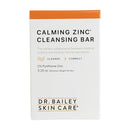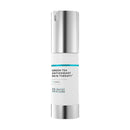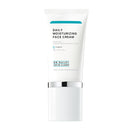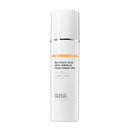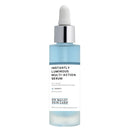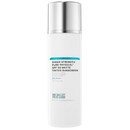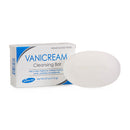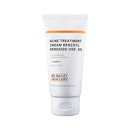Maskne Breakouts; Dermatologist Tips to Treat and Prevent it

Maskne breakouts are getting everyone's attention. Wearing facial masks and coverings during the COVID pandemic is leading to maskne and other facial skin problems. Warm and humid conditions under your facial mask put your skin at risk. Learning how to prevent and treat maskne and the skin problems caused by wearing facial masks is important as we navigate life during COVID.
What is maskne?
Maskne is acne under your facial mask. The medical name for it is acne mechanica and it’s not new. Nor is it exactly what you think it is! What is new is that many people are new experiencing it under their face masks.
Dermatologist’s more commonly see acne mechanica when skin is rubbed under tight or heavy protective gear such as under the chin strap of helmets used in sports such as football. The brim of helmets and baseball caps put forehead skin at risk and shoulder pads and back packs put the skin of the back at risk.
Pimples and inflamed red bumps form due to friction, pressure and occlusion of the pores by the straps, hat bands, shoulder pads and now face masks. Sweat exacerbates the problem. Skin microbes such as bacteria and yeast thrive in these conditions. The lining of the pores of the skin become inflamed and the outer surface of facial skin can also become abraded by fabric – all leading to pustules and painful red bumps. Acne mechanica can occur in people without preexisting acne. If your complexion is prone to acne, it can be much worse when your skin is blocked by wearing your face mask, chin strap or hat band.
Active and athletic individuals such as athletes and soldiers have suffered acne mechanica for years because the combination of sweat and occlusion create this perfect environment for pimples. Health care workers in Hubei China experienced it early during the COVID pandemic. The Journal of the American Academy of Dermatology reported that 97% of health care workers fighting COVID in Hubei China experienced skin problems under their personal protective equipment, including masks. Now maskne is trending in the US,
Summer heat and the diligent use of facial coverings during the COVID pandemic has maskne breakouts and other mask related skin problems trending. I’ve worn a surgical face mask for 8 hours a day for many years. I’m well familiar – personally and professionally – with skin problems under face masks and I have created a number of unique solutions that help. - Dermatologist Dr. Cynthia Bailey
You may have even more than maskne breakouts causing your skin to be red under your face mask.
Acne is not the only reason for redness and skin problems under your face mask. I want you to be aware of these other causes of face mask skin irritation because you may have both maskne and one of these additional reasons for skin problems under your mask.
Eczema under facial mask is becoming a common COVID pandemic skin problem.
There are three different types of eczema to watch out for including seborrheic dermatitis, allergic eczema and irritant eczema (both forms of contact dermatitis).
The signs of eczema from face masks include,
- Red skin and scale. Blisters and crust can form too.
- Eczema usually itches but as skin becomes abraded from the mask, the skin can sting.
- Eczema is usually limited to the area under your mask.
Seborrhea is eczema from facial dandruff and you may also have scalp or ear dandruff.
Contact dermatitis can happen from allergic reaction to chemicals in the fabric of your mask including
- dyes,
- formaldehyde added to fabric,
- elastic,
- metal in nose closures, and
- laundry care residual chemicals such as fragrance and detergent residue.
- Paper masks also are made with many chemicals.
Occlusion and humidity under your mask will leach chemicals out of mask material and drive them deeper into skin than would normally happen.
Rosacea can flare up under your facial mask.
Rosacea pimples often don’t come to a pustular head and are not associated with blackheads.
Prickly heat (miliaria) can cause red pimple-like lesions under your face mask from blocked sweat.
These can look like acne or rosacea but the problem involves sweat gland pores instead of hair follicle pores. Sweat pores become blocked when they can’t easily excrete sweat. The signs of miliaria depend on where the sweat gland is blocked. If it is just under the opening you will see a tiny blister. If the blockages are deeper down in the pore there may be a pustules or red bumps.
Pityrosporum folliculitis type of ‘fungal’ acne that can occur under your face mask.
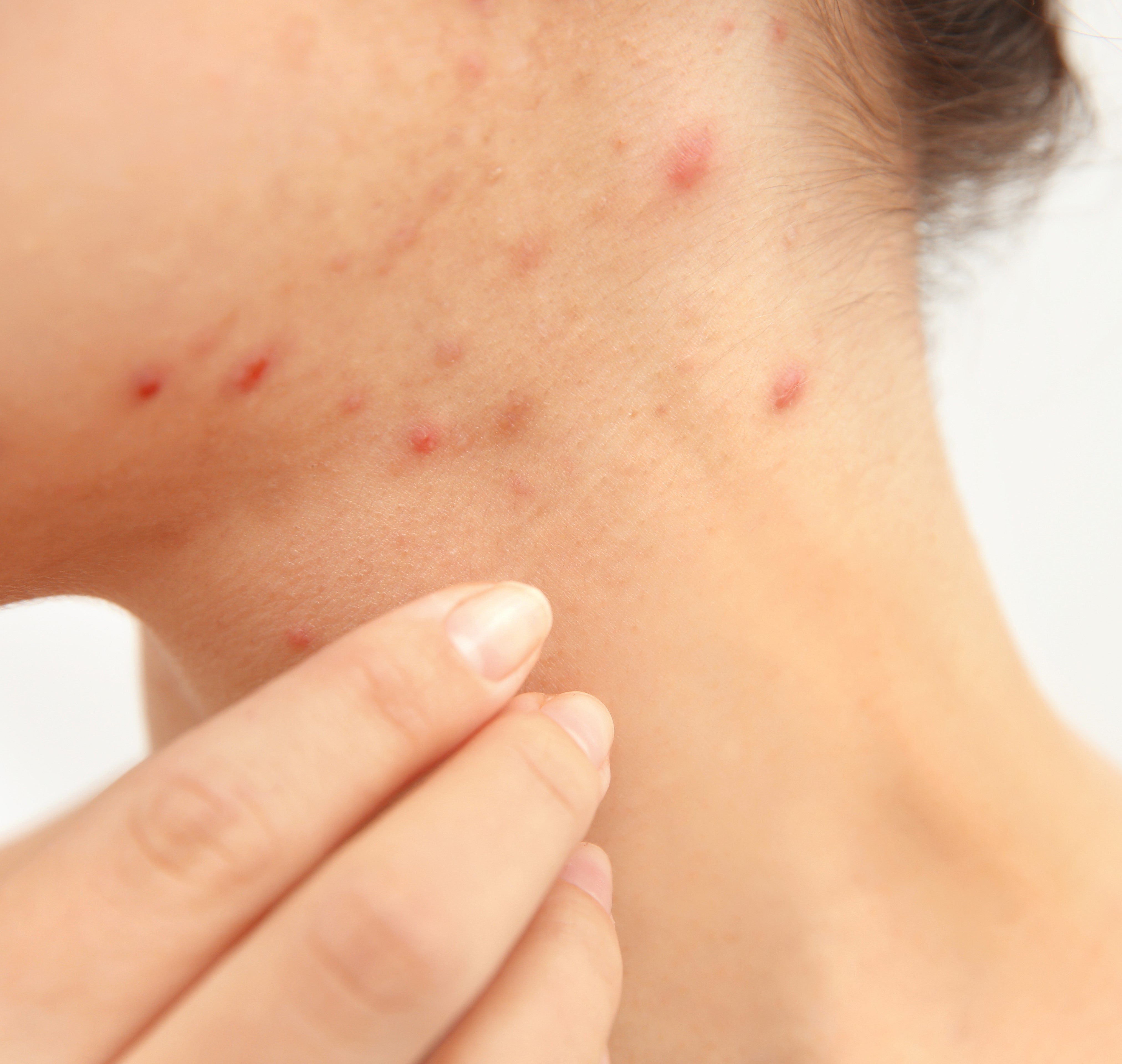 This type of acne is technically different that classic acne vulgaris. The Pityrosporum yeast loves sweaty and humid skin. It also commonly causes pimples and small flesh colored bumps on the chin and jaw line. Pimples often heal with brown marks and small white scars.
This type of acne is technically different that classic acne vulgaris. The Pityrosporum yeast loves sweaty and humid skin. It also commonly causes pimples and small flesh colored bumps on the chin and jaw line. Pimples often heal with brown marks and small white scars.
How do you treat and prevent maskne breakouts and mask skin problems?
Changing your skin care to prevent maskne is important. Remember that the environment under your mask is like none other on your face. The products you apply here will be intensified under your mask. Plus, realize that what you wear on the skin under your mask will be transferred back and forth from your mask to your skin all day. Protect your facial skin during the day under your face mask. Treat your acne or other skin problems at bedtime when you're not wearing a mask.
Skin care during days when you will be masked needs to be gentle and non-irritating to your skin as your mask creates a humid and occlusive environment.
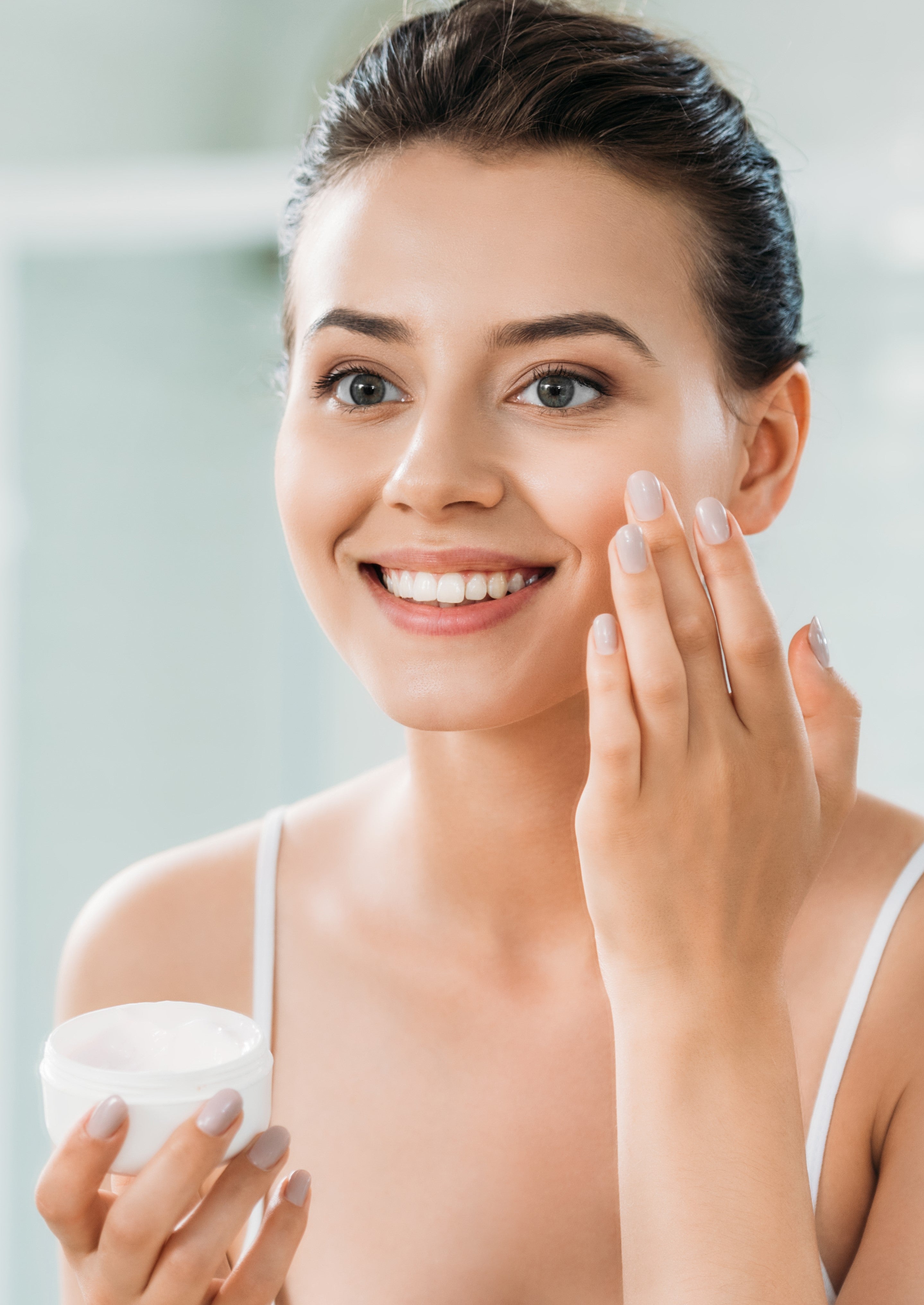 Sweat and occlusion will put products into solution and effectively ‘grind them into’ your skin. You simply can’t apply anything that might be remotely irritating under your mask. Nope, care for masked skin gently and your skin will feel much better. This means 2 important changes:
Sweat and occlusion will put products into solution and effectively ‘grind them into’ your skin. You simply can’t apply anything that might be remotely irritating under your mask. Nope, care for masked skin gently and your skin will feel much better. This means 2 important changes:
- Avoid wearing heavy makeup under your mask. This will clog pores and aggravate acne. It will also get on your mask and be transferred back and forth to your skin.
- Avoid wearing irritating skin care products under your mask. Irritating ingredients will become much more irritating due to the occlusion, sweating and rubbing between your mask and your skin. This includes acne medicated ingredients and age fighting ingredients such as AHAs and BHAs. Keep skin care simple as you prepare for your masked day. Use any irritating skin care products at bedtime instead.
The best skin care to use under your face mask
Wash with a gentle and non-medicated cleanser. Opt for a hypoallergenic soap or skin cleanser. Options include:
-
 Extremely Gentle Foaming Facial Cleanser or Naturally Best Bar Soap (all skin types),
Extremely Gentle Foaming Facial Cleanser or Naturally Best Bar Soap (all skin types), - Zinc pyrithione cleansing bar is a good option if you think that your maskne is partly due to an overgrowth of Pityrosporum yeast and thus Pityrospourm folliculitis type of "fungal" acne.
Apply a skin protective, and barrier healing, moisturizer.
 Look for ingredients such as squalane, ceramides and siloxanes such as dimethicone. My Daily Face Cream for Normal to Dry Skin is ideal. Don't let the "dry skin" label scare you if you have oily skin. This cream is non-comedogenic and perfect for under your mask. I much prefer it to products that contain petrolatum, which I am seeing recommended for maskne and facial mask problems. If you are still in your acne prone years or suffer from adult acne,
Look for ingredients such as squalane, ceramides and siloxanes such as dimethicone. My Daily Face Cream for Normal to Dry Skin is ideal. Don't let the "dry skin" label scare you if you have oily skin. This cream is non-comedogenic and perfect for under your mask. I much prefer it to products that contain petrolatum, which I am seeing recommended for maskne and facial mask problems. If you are still in your acne prone years or suffer from adult acne,
I recommend my Daily Face Cream for Normal to Oily Skin. It includes all the same ingredients with the exception of ceramides. Both of my Daily Face Creams provides barrier protection with dimethicone, cyclomethicone and beeswax, fight redness and inflammation with Green Tea and Coenzyme Q10 and are fragrance free. I think they are the perfect protective and healing cream for under-mask skin care.
Daily facial sunscreen is still essential when you are wearing a face mask.
You need it for both the unmasked portion of your skin and because you will be outside and able to remove your mask at times. Don’t use sunscreens with potentially irritating ingredients. Opt for hypoallergenic and soothing mineral zinc oxide products in bases that are also non-irritating. My preference is a product like my Sheer Strength Pure Physical Invisible Creme SPF 50+ which is very light weight on your skin and also contains barrier protecting ingredients.
If you want an un-tinted sunscreen, the Sheer Strength Pure Physical Spray SPF 50+ sunscreen offers similar benefits. VaniCream SPF 50+ sunscreen is another hypoallergenic brand available online that is appropriate for under-mask use.
Add a high concentration green tea product to your skin care routine to reduce sebum, fight maskne and skin irritation from your facial mask.
 One really helpful ingredient to consider adding to your mask skin care is high concentration Green Tea. Topically applied green tea has been shown to reduce skin sebum production, redness and inflammation. You get the best results with high concentration green tea in a professional formulation such as my Green Tea Antioxidant Skin Therapy. This can be applied AM and PM under your moisturizer if you are suffering from maskne and/or mask eczema.
One really helpful ingredient to consider adding to your mask skin care is high concentration Green Tea. Topically applied green tea has been shown to reduce skin sebum production, redness and inflammation. You get the best results with high concentration green tea in a professional formulation such as my Green Tea Antioxidant Skin Therapy. This can be applied AM and PM under your moisturizer if you are suffering from maskne and/or mask eczema.
Dermatologist's tips to take care of your face mask to prevent skin problems.
Wear a new mask every day. This means you need enough masks to get you through between your usual laundry day intervals plus one for that day.
Use hypoallergenic laundry care. Use fragrance free laundry soap and warm to hot water. I am having good luck with Kirkland Signature Ultra Clean Free & Clear Laundry Detergent. I have used it for years and my sensitive skin family and I have put it to the test. It is fragrance free and does not leave detergent allergens in my laundry. Alternatives include All Free & Clear and Cheer Free.
Remove all detergent residue from your mask. This is important. You may need to rinse your mask twice and be sure not to pack the wash load tight that includes your masks because this prevents a good rinse cycle. Actually, all clothing held close to your skin in areas where you sweat a lot (think skin folds) should be rinsed clean of detergent residue. This applies to your workout gear and undergarments, to name a few. If your skin is really suffering, you may want to also hand rinse your mask until you can’t see any detergent residue floating on the rinse water.
Line dry your mask to prevent heat damage to fibers. Heat is especially damaging to mask made with elastic or stretch fabric. Nixing the dryer will also help prevent your mask from picking up fabric softener drier sheet residue or laundry residue that often concentrated in the drier.
Don’t bleach your mask if it contains elastic. Only bleach 100% cotton masks.
What is the best face mask to avoid maskne and mask eczema?
Be certain that the inner lining of your facemask is soft and made of cotton. Cotton will let your skin breath and will wick-away sweat. Ideally you want soft 100% cotton fabric that has minimal dye color next to your face.
Don’t choose a mask with potential allergens on the inner lining. These include:
- formaldehyde ingredients used for wrinkle-resistance and shrink-proof fabric.
- Rubber additives,
- glues,
- anti-microbial ingredients,
- metals,
- fire retardants, and
- fabric dyes. Color in fabric can be an allergen and it is best to use non-dyed fabric next to your sensitive and sweaty facial skin.
Wash your mask 3 times before washing it to remove any chemicals added to the fabric. This is recommended to avoid textile allergy.
Bottom line: pick a face mask with a soft, 100% undyed cotton layer next to your face and wash out any fabric chemicals before you wear it.
Treat your maskne at bedtime
 Keep your pores unclogged and fight bacteria and yeast at night. Wash with an acne treating cleanser that contains salicylic acid (which penetrates well into oily pores to unclog them) such as my Foaming Acne Treatment Cleanser followed by applying my Acne Treatment Pads. If you have Pityrosporum type of fungal acne, use a pyrithione zinc soap as face wash.
Keep your pores unclogged and fight bacteria and yeast at night. Wash with an acne treating cleanser that contains salicylic acid (which penetrates well into oily pores to unclog them) such as my Foaming Acne Treatment Cleanser followed by applying my Acne Treatment Pads. If you have Pityrosporum type of fungal acne, use a pyrithione zinc soap as face wash.
Apply benzoyl peroxide to pimples or acne prone areas. This is the best way to treat and reduce the acne causing bacteria called C. acnes (formerly P. acnes). Use 2.5% benzoyl peroxide, which is equally effective as higher concentrations but less irritating. Find this in an alcohol free cream in my Benzoyl Peroxide 2.5% Cream.
Get my Acne Wash, Benzoyl Peroxide and Daily Face Cream in my Ultimate Acne Solutions Kit. This is the skin care you expect from a dermatologist, made in an FDA regulated lab of the purest medicated ingredients.
Add the Calming Zinc face wash bar if you also have Pityrosporum folliculitis and alternate it with the Foaming Acne Wash.
Dermatologist's 7 additional tips to treat maskne and skin problems under your face mask
- Green tea is an excellent ingredient to add to your maskne skin care. As I mentioned above, green tea has been shown to reduce sebum production, redness and skin inflammation.
- Avoid physical exfoliation of the skin under your mask. Mask materials abrade skin (aka exfoliating skin). If you have skin problems under your mask, protect your skin barrier and skip the exfoliating sponges and scrubs until the COVID pandemic is over.
- Use skin care products with siloxanes including dimethicone and cyclomethicone like I mentioned above. These are the classic barrier protecting ingredients that dermatologists have recommended for years. They are non-comedogenic and allow things to slide over instead of abrade skin.
- Watch for skin infections like impetigo and Staph. If you have a pimple that fails to heal, that gets really big and tender or develops a sticky crust, it may have become infected. It’s not uncommon because about 30% of the population carries Staph the bacteria that causes impetigo in their nose without knowing it. See your doctor if you think your maskne may have become infected with Staph.
- Take breaks from wearing your mask when it’s safe. Let your skin breath and your mask air out.
- Wash your face immediately when you get home from your day and apply moisturizer again. You wash your hands the minute you step in the door. Wash your face right after that. Again, use warm water and a gentle cleanser if you need to remove excess oil. Use cool water if you need to soothe redness and skin irritation.
- During the day, wipe the skin under your mask with a damp cloth using warm water if you need to remove oil or cool water if you need to soothe skin and relieve redness. Reapply your light hypoallergenic moisturizer before re-masking.
Maskne skin care essentials
This kit gives you what you need for your daytime skin care routine for under your mask; gentle cleanser, Green Tea, ideal barrier moisturizer and a zinc oxide sunscreen.

This fights Pityrosporum yeast type of acne, which thrives in the humid environment under your mask. It also fights rosacea and seborrhea. Use it to cleanse skin at bedtime.

Perfect for bedtime acne spot treatment
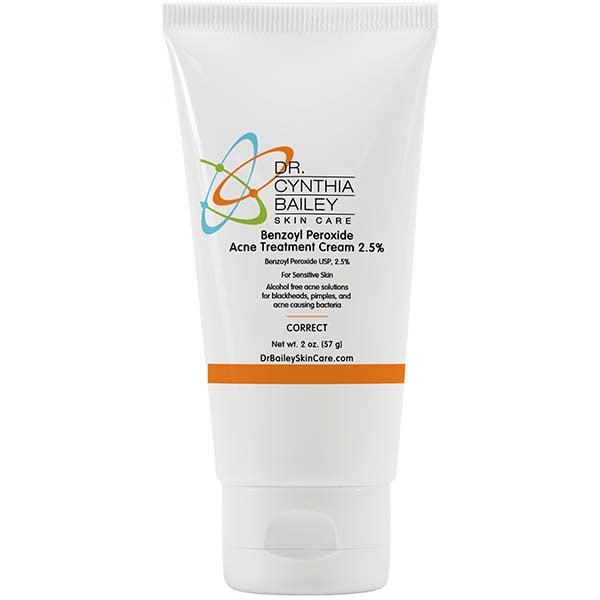
Professional acne fighting products medicated with the best ingredients to fight acne.

Facial Flaking and Redness Solution Kit

References:
Emer J, Sivek R, Marciniak B. Sports Dermatology: Part 1 of 2 Traumatic or Mechanical Injuries, Inflammatory Conditions, and Exacerbations of Pre-existing Conditions. The Journal of Clinical and Aesthetic Dermatology. 2015 Apr;8(4):31-43.
Mills OH, Kligman A. Acne Mechanica. Arch Dermatol. 1975;111(4):481–483. doi:10.1001/archderm.1975.01630160071007


